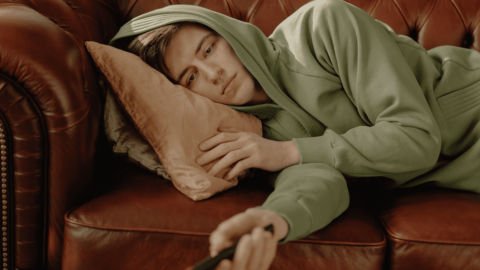You’ve made the courageous decision to quit opioids, and you’re ready to turn the page on a life overshadowed by addiction. For a few days, you’re confident. You feel empowered. But then, unexpectedly, a rush of longing hits you—a craving so strong it seems impossible to ignore. You might wonder, “How long will I have to deal with this?”
Cravings can be one of the toughest parts of opioid recovery. They can catch you off guard, even when you’re determined to stay clean. However, understanding why these cravings happen and how they evolve over time can make them less daunting. In this article, we’ll explore the typical duration of opioid cravings, the stages of withdrawal, and practical strategies to help you manage cravings at every point in your recovery journey.
The Typical Duration of Cravings After Quitting Opioids
Opioid cravings don’t follow a one-size-fits-all timeline. Their intensity and duration depend on how long you used opioids, the type of opioids you took, your brain chemistry, and whether you’re using medication-assisted treatment (MAT) like Suboxone.
Generally, cravings can be broken down into two major phases:
- Acute cravings – These happen during the withdrawal phase, usually in the first few days to weeks after quitting. They feel urgent and physical, often linked to opioid withdrawal symptoms like sweating, anxiety, and nausea.
- Post-acute cravings – These can persist for months or even years, appearing unexpectedly due to stress, triggers, or emotional distress. While not as intense as acute cravings, they can still be powerful.
Understanding this timeline can help you prepare for cravings rather than be caught off guard.
Here’s what you can expect at different stages of recovery.
How Cravings Change Over Time: Acute vs. Post-Acute Withdrawal
Cravings don’t stay the same throughout recovery. In the early days, they feel like a desperate physical need, but over time, they shift into a psychological and emotional challenge.
Understanding the difference between acute withdrawal cravings and post-acute withdrawal cravings (PAWS) can help you prepare for each stage and develop the right coping strategies.
Acute Withdrawal Cravings (Days 1-14) – Physical Dependence
This is when cravings are at their strongest. The brain’s dopamine imbalance drives these cravings. Opioids flood the brain with dopamine, the “feel-good” chemical. When you remove opioids, dopamine levels crash, leading to intense cravings as your brain demands a fix.
Since your body is adjusting to the absence of opioids, it leads to:
- Physical cravings: The brain craves the opioid high to ease withdrawal symptoms.
- Compulsion to use: The urge to take opioids feels almost automatic.
- Extreme discomfort: The body aches, nausea, sweating, and anxiety make cravings feel unbearable.
How to Handle Acute Withdrawal Cravings:
- Medication-assisted treatment (MAT): Suboxone, methadone, or naltrexone can ease withdrawal and cravings.
- Stay hydrated and nourished: Dehydration and malnutrition can make withdrawal worse.
- Rest and self-care: Your body is in overdrive, so focus on gentle movement, warm baths, and relaxation techniques.
Post-Acute Withdrawal Cravings (Weeks to Months) – Psychological Dependence
By this stage, physical withdrawal symptoms fade, but mental cravings persist. Your brain is still healing, and environmental or emotional triggers can reignite urges.
What cravings look like in this phase:
- Emotional triggers – Stress, boredom, or sadness can suddenly make opioids seem appealing.
- Memory-based cravings – Seeing an old friend, visiting a familiar place, or hearing a song can bring back urges.
- Random “flash cravings” – Sudden, unexpected urges even when things are going well.
How to Handle Post-Acute Withdrawal Cravings:
- Identify triggers: Make a list of places, people, or emotions that make you want to use.
- Build new routines: Replace opioid-related habits with healthy activities like exercise, hobbies, or journaling.
- Therapy and support groups: Cognitive behavioral therapy (CBT) and peer support can help rewire the brain’s craving response.
Long-Term Cravings (3 Months – 1 Year & Beyond) – Memory-Based Cravings
At this stage, cravings become less frequent but more subtle. Your brain has started healing, but deeply ingrained opioid memories can still trigger urges, especially during stressful or emotional moments.
Long-term cravings are:
- Less intense but still risky – They may feel like passing thoughts rather than overpowering urges.
- Triggered by major life events – Stress, grief, or trauma can reawaken cravings.
- More about nostalgia than withdrawal – The brain remembers the “good” parts of opioid use while ignoring the negative consequences.
How to Handle Long-Term Cravings:
- Stay connected with your recovery plan: Regular follow-ups with a provider can help you stay accountable.
- Develop healthy stress-management techniques: Mindfulness, meditation, and exercise can help manage cravings.
- Continue personal growth: Set new goals, build positive relationships, and explore fulfilling activities that support long-term recovery.
Cravings don’t last forever—but they do evolve. By understanding the different stages of cravings and having a plan in place, you can stay in control of your recovery journey.
QuickMD: Expert Support for Managing Cravings and Staying on Track
Cravings can be unpredictable, but you don’t have to face them alone. Whether you’re in the early days of withdrawal or months into recovery, QuickMD offers expert medical support to help you manage cravings and prevent relapse.
Why Choose QuickMD for Opioid Recovery?
- Medication-assisted treatment (MAT): Suboxone and other proven medications to reduce cravings and withdrawal symptoms.
- Same-day online appointments: Get help whenever you need it—no waiting, no stigma.
- Licensed addiction specialists: Personalized treatment plans tailored to your needs.
- Affordable care: Appointments are just $99 (medications not included).
- Confidential & convenient: Talk to a provider from the privacy of your home.
How QuickMD Helps You Manage Cravings
- Induction Visit: Your provider prescribes a 7-day supply of Suboxone to help stabilize withdrawal and cravings.
- Follow-Up Visits: Adjust your treatment plan based on how you’re feeling—find the right dose for long-term success.
- Ongoing Support: Monthly maintenance appointments to ensure cravings stay under control.
Cravings don’t mean failure—they mean your brain is healing. With the proper medical care, you can stay in control and move forward in your recovery.
Final Thoughts: You Are Stronger Than Your Cravings
Opioid cravings can feel overwhelming, but they do not last forever. Understanding why cravings happen, how they change over time, and what strategies can help make it easier to take control of your recovery.
- Cravings peak in the first two weeks but start to fade over time.
- Psychological cravings last longer, but you can manage them with the right tools.
- Long-term success is possible with medical support, healthy habits, and a strong recovery network.
You don’t have to navigate recovery alone. Book a QuickMD appointment today and get the professional, judgment-free care you deserve. Your future is waiting—let’s get there together.




